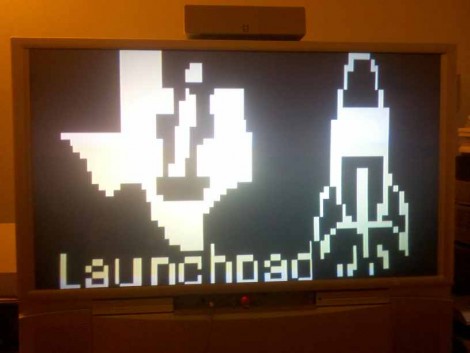
[nootropic] has a new game out for hackvision, “Asteroids”! We covered the hackvision back when it first started appearing in October of 2010, and hardware wise it has not changed. It is still an Arduino (software) compatible system sporting a atmega328, video and audio out connections (uses the TV-out library), all on a nice printed circuit board that, with the buttons, resembles a game controller.
While its impressive enough to run arcade inspired games like space invaders, pong, and tetris while using Arduino and a library, Asteroids takes the game up a notch.
Features that make Asteroids well, Asteroids include a mod of the TV-out library so that bitmaps can fly over each other without erasing the pixels under them to give that old time vector arcade feel, and “point in polygon” style collision detection, which is a fantastic / efficient way of collision detection against irregular shapes, limited platform or not.
Last but not least, [nootropic] used the set_vbi_hook() function of the tv out library in sound design, going from simple “beeps” and “boops”, to “beeps” and “boops” on a constant 60Hz refresh (in the case of NTSC) that allows him to build more complex sound effects that give a nice arcade sound of explosions and laser blasts.
Join us after the break for a quick video, and remember, this is Arduino based so if you already have an Arduino, you can add the supporting hardware (buttons, resistors, and RCA jacks) and run any of the games currently offered, or make your own.











